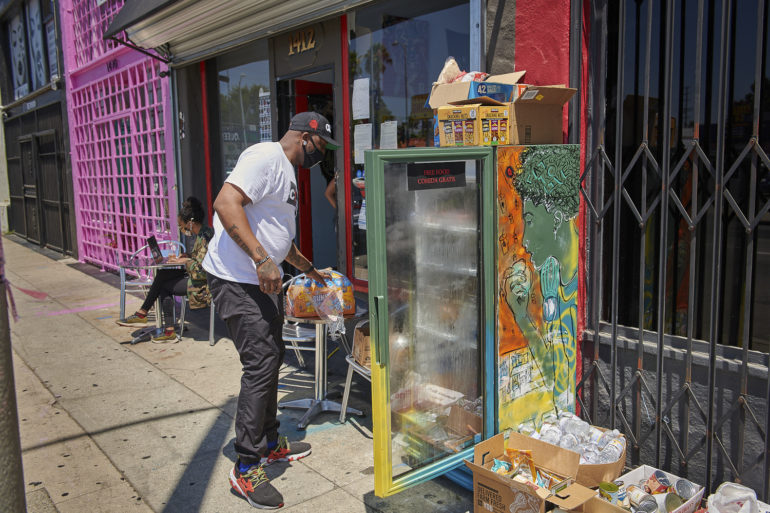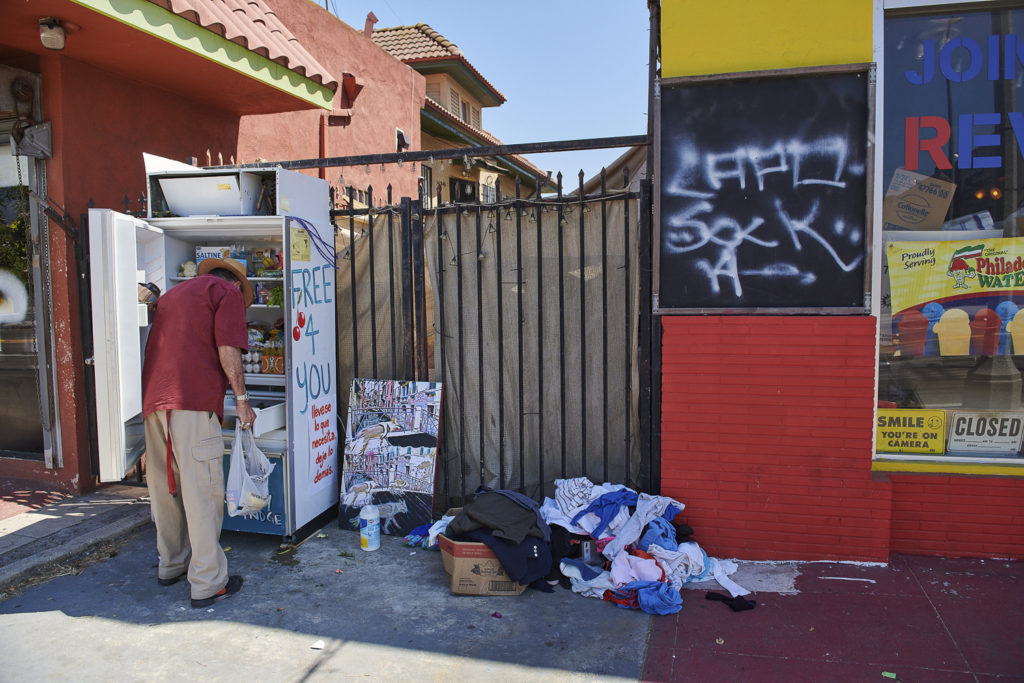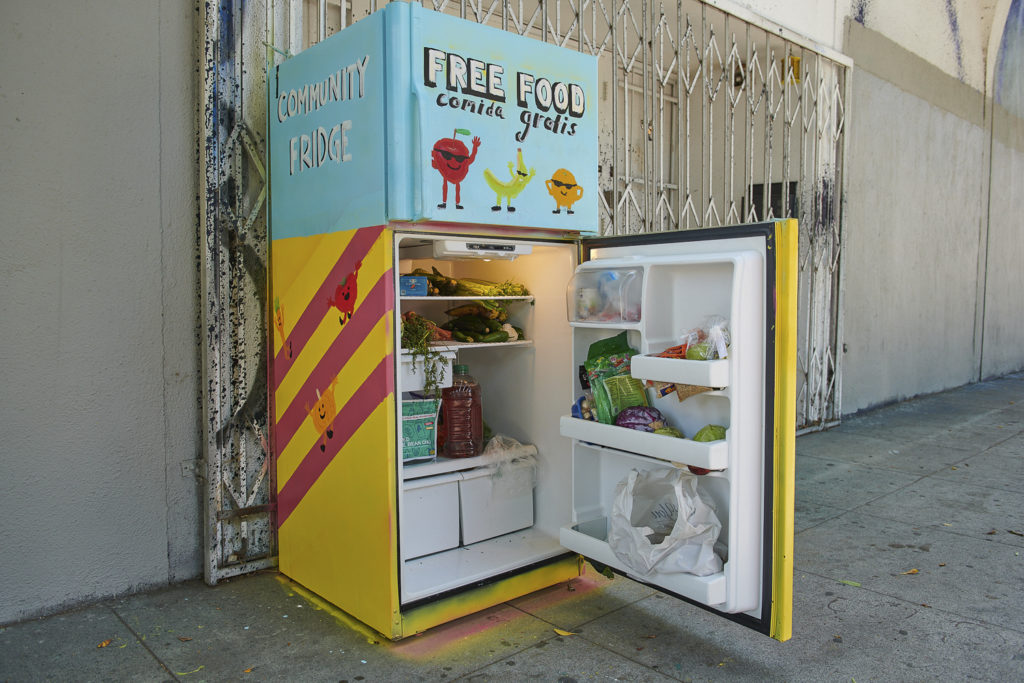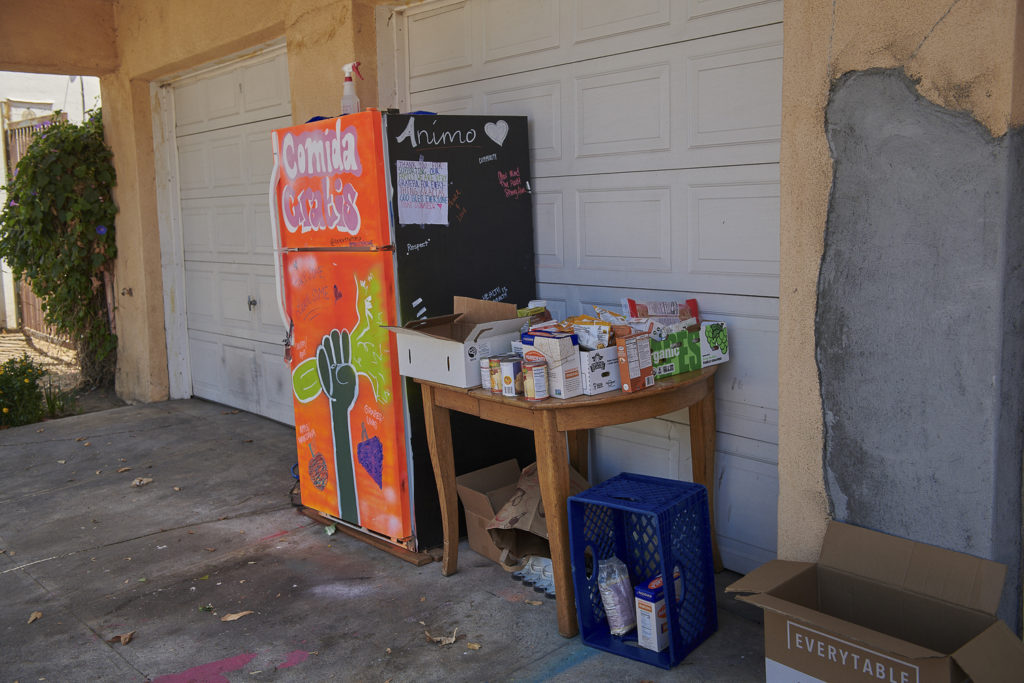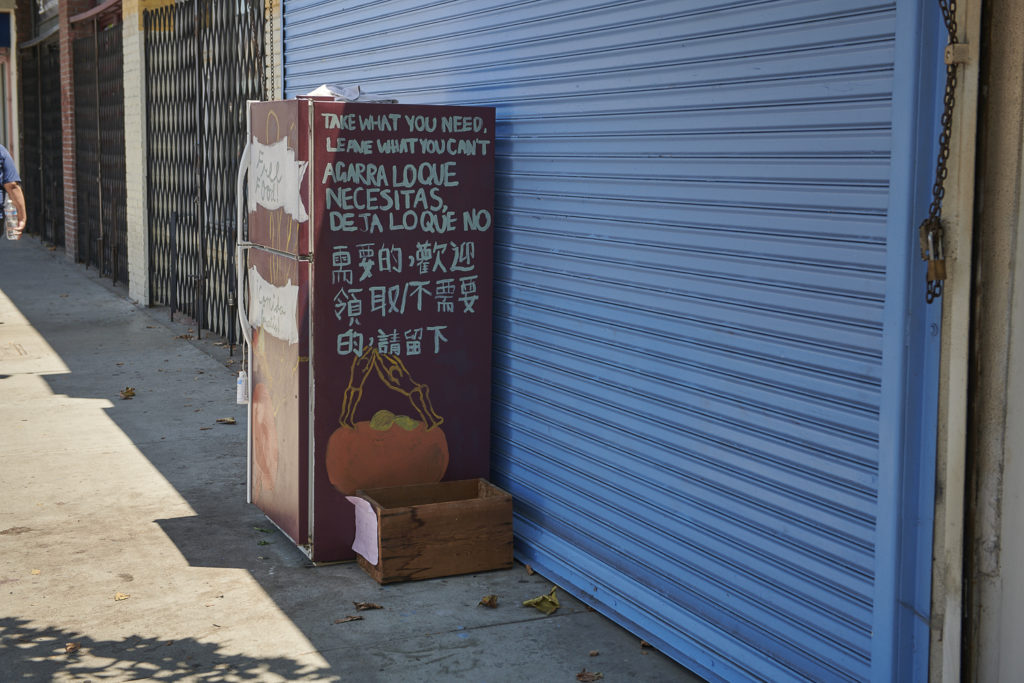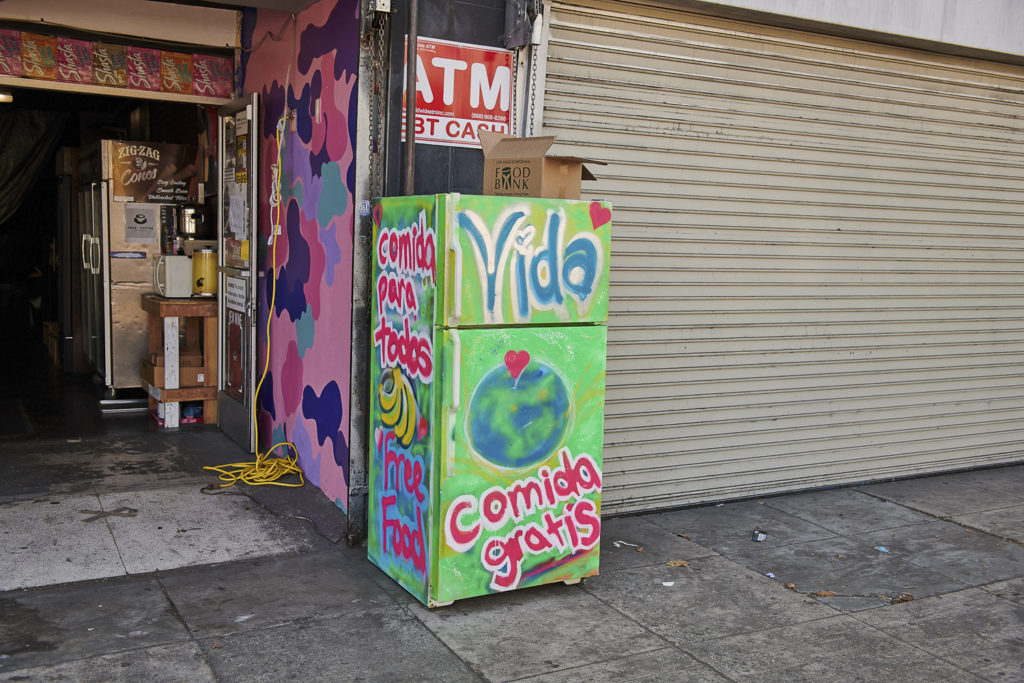Random refrigerators started popping up in Los Angeles at the start of July. They seemed to be sprinkled over various areas of the city, and no two were alike. There were a few on the main, well-traveled streets, some on side streets and another located in the driveway of a home in a residential area.
Most feature artwork, with messages in English and Spanish encouraging people in the community to “take whatever food you and your family may need.” And if you’d like to leave some food for others, well, that’s OK too.
They are known as the Los Angeles Community Fridges, inspired by similar organizations in New York City. But the mission in L.A. has taken on a life of its own, in true Angeleno style.
Local artists have come forward to paint the refrigerators in bright, welcoming colors that beckon you to look inside and not be shy. One even has chalkboard paint on its side for others to leave messages of hope. People have donated extra fridges they no longer need or use, while others have pitched in with a truck to move these units to their new homes. Shop owners, and even one homeowner, have stepped up to foot the bill for the electricity that keeps each well-stocked refrigerator running 24/7.
And they seem to be multiplying, mostly in areas hit hardest financially by the pandemic. Food insecurity is at an unprecedented high across Los Angeles, and these community fridges help to bridge the gap between school meals, food banks and shelters.
There is no limit on what you can take. Most food is gone within 48 hours, only to be magically restocked by good Samaritans with excess food from a Costco run, their local victory garden or donations from a beverage company or restaurant. Often, tables overflowing with bread and other baked goods are placed next to the fridges. Some people even drop off clothes.
Joshua Mock opened his coffee shop, Little Amsterdam Coffee, in Mid-City this past January with the hope of creating a space where community and coffee happen. Then COVID-19 hit. Instead of panicking, he started offering free drinks for health care workers and senior citizens. Joshua also decided to give first responders and small business owners half-off their drinks during the pandemic. So it was no surprise that he was one of the first small business owners to ask for an L.A. Community Fridge to be installed right outside his shop.
With money being tight for Angelenos right now, Mock wonders if the utility company might step in to help defray the costs of keeping the various community fridges running. It’s a great question. Small business owners are trying to save their shops and also help others in need, so it would seem that giving them a break on the additional electricity that the fridges take to run would be a welcome relief.
In the meantime, these shop owners vow to carry on and keep the fridges running as long as they can. For those who need food right now, that is a lifeline.
Being a community project, there is really no policing and very few hard-and-fast rules. Take whatever you need. No questions asked. Take food and drinks as often as you want. That’s why they are there. The only rules are basics, such as if you see vegetables or other items past their prime, pull them out and throw them away. See a spill? Be kind and clean it up before leaving. If you’re dropping off food, place your new items in the back of the fridge and move the older contents toward the front, so they are used first.
Plant-based food is preferred, and the L.A. Community Fridge group asks that meat not be left in the fridges, as it can go bad, and they don’t want people getting sick. Eggs and milk are plentiful, buns for hotdogs and hamburgers are as well, and in the freezers, you will sometimes even find ice cream for the kids. Homemade meals are also accepted. They ask that you take all COVID-19 precautions seriously when preparing food and that you leave a note listing the ingredients in case someone has food allergies and date the items before leaving them.
We dropped off a large container of apple juice at one L.A. Community Fridge and watched a young mom pour herself a cupful before placing it back. That is the beauty of a community fridge — it is just like the one you have at home. Grab what you need, leave the rest. Come back later when you need something else.
At least three of the L.A. Community Fridges we visited were stocked with meals in to-go containers from Everytable. During standard times, the company offers a variety of fast, healthy meals-to-go and adjusts prices based on the income of the people who live nearby. Their locations stretch from Compton to Brentwood, but only two of their nine sites are operating during the pandemic. Polo’s Pantry, which serves unhoused and marginalized communities in Los Angeles, is working hand-in-hand with L.A. Community Fridge to stock the community fridges daily with Everytable meals in locations where people have a hard time accessing fresh, healthy meals.
Lest anyone think this is akin to accepting charity, posts on the L.A. Community Fridge Instagram are quick to remind Angelenos: “This is not charity, this is mutual aid. We eat this food too. Everyone deserves access to healthy food. Scarcity is a myth. Eliminate food waste. This is all for the community, by the community. Food unites us.”
People in Los Angeles seem to be doing a great job of taking matters into their own hands and working together to make sure their neighbors never go hungry during the pandemic. To find out how you can help or to find an L.A. Community Fridge near you, follow @lacommunityfridge on Instagram.

